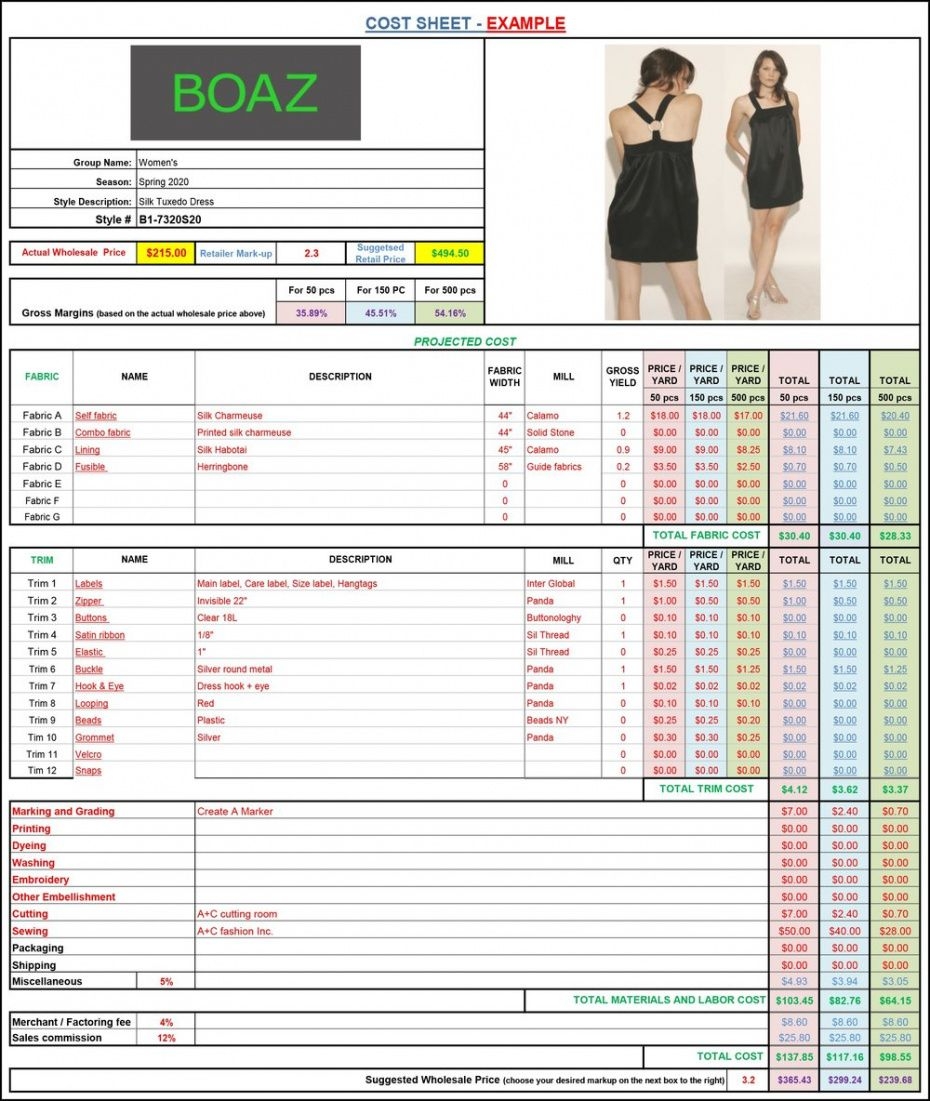In the fashion industry, managing costs is crucial for the success of a brand or a designer. A fashion cost sheet is a document that outlines all the costs associated with the production of a garment or a collection. It helps to ensure that the pricing of the final product is competitive while still allowing for a profitable margin.
Creating a detailed fashion cost sheet requires careful consideration of various factors such as material costs, labor costs, overhead expenses, and any additional costs like shipping or marketing. By accurately tracking all these costs, designers can make informed decisions about pricing and budgeting.
Example of a Fashion Cost Sheet:
Here is an example of a simplified fashion cost sheet for a basic t-shirt:
| Cost Item | Cost Amount |
|---|---|
| Material (cotton) | $5 |
| Labor (cutting, sewing) | $3 |
| Overhead (rent, utilities) | $2 |
| Shipping | $1 |
| Marketing | $1 |
| Total Cost | $12 |
This cost sheet shows a breakdown of the costs involved in producing a single t-shirt. By adding a markup percentage to the total cost, designers can determine the retail price of the product.
It is important to regularly update and review the fashion cost sheet to account for any fluctuations in costs or changes in the production process. By keeping a close eye on expenses, designers can maintain profitability and competitiveness in the market.
In conclusion, a well-prepared fashion cost sheet is a valuable tool for designers and brands to manage costs effectively and make informed business decisions. By accurately tracking all expenses associated with production, designers can ensure that their pricing strategy is sustainable and profitable.
